
A New Look at Loyalty as a Business-critical Growth Strategy
Learn how to adapt to changing expectations and get innovation tips from Surdyks.
Most enterprises focus the bulk of their resources on acquiring new customers but faced with skyrocketing acquisition costs are looking for more cost-effective ways to gain new customers. Retention and loyalty are typically secondary and left until later in the customer lifecycle.
Increasing retention by 5% can drive up to a 70% increase in profits.
Source: Bain & Company
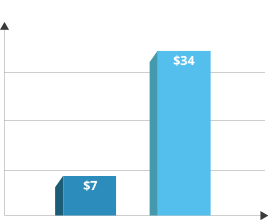
They cost less
Boston Consulting Group reports it costs $7 to market to existing customers vs. $34 per new customer.
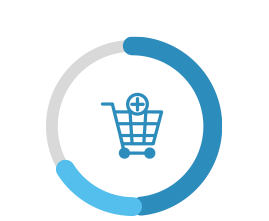
They spend more
Forbes reports repeat customers can increase sales by 47%, and loyalty members spend up to 18% more.
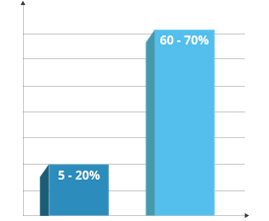
They convert more often
According to Marketing Metrics, repeat customers have a 60 – 70% chance of converting vs. 5 – 20% for new customers.
Today’s consumers are everywhere, and the most successful brands meet their customers where they are. According to Commerce Hub, 86% of shoppers regularly hop across at least two channels.
Omnichannel experiences are centered around the customer and make it easy for them to seamlessly interact across multiple devices, touchpoints and channels. Time and convenience are now must-haves when it comes to consumers clicking buy now—and the brands that make it quick and effortless to act on customers’ preferred channels win.

Reduce customer churn
In addition to increasing customer lifetime value, the ability to deliver strong omnichannel customer experiences helps brands keep customer churn under control. Aberdeen Group reports that companies with extremely strong omnichannel customer engagement retain on average 89% of their customers, compared to just 33% for companies with weak omnichannel customer engagement.
How loyalty supports omnichannel experiences
According to McKinsey & Company, omnichannel excellence requires a laser-like focus on value creation. Since loyalty is built around a mutual value exchange, it makes perfect sense that brands make their loyalty strategy an integral part of their omnichannel strategy.
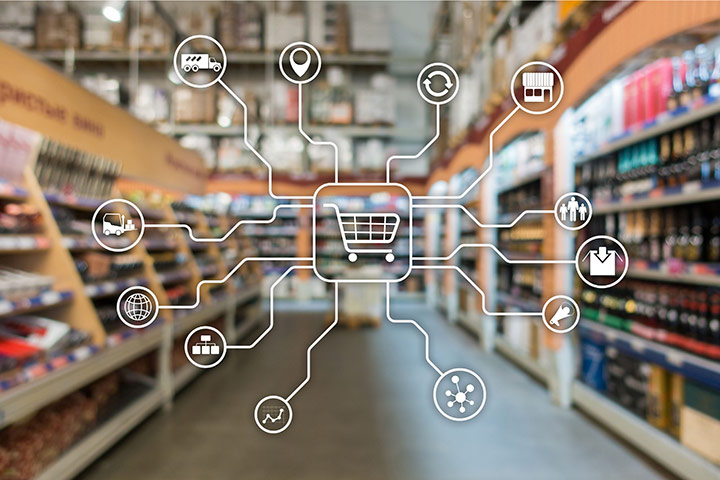
End-to-end omnichannel experiences span the entire customer journey and happen across any channel. Here’s a summary of what the journey can look and feel like when you leverage the right loyalty solution to tie together every touchpoint.
Shopping
Know who every customer is no matter where they shop. Individualize recommendations, show available rewards, what they can earn and how to reach the next tier.
Purchases
Show customer rewards earned with purchases on product pages and in the shopping cart and apply them no matter where they choose to buy.
Payments
Ensure customers never miss out on a reward by paying and earning rewards with the same card across any of their preferred channels.
Promotions/Marketing
Robust first-party data enables timely, relevant personalized marketing messages and offers via social, email, SMS, mobile and more.
Rewards
Customers can check their status as well as earn and redeem rewards using any of their preferred channels—in-store, online, or on mobile.
Support
Customer support representatives know customer preferences, history, preferred communication channels and what they need help with.
While most enterprises clearly understand the urgency to provide cohesive omnichannel experiences, technology selections often limit, rather than enhance their ability to deliver. For example, their ecommerce and POS systems don’t speak to each other—meaning their POS solution creates offers that can only be used at their POS, and likewise for their ecommerce technology. It’s not enough to engage with customers across multiple channels—they must be seamlessly tied together. The Institute for Management Development reports brands that can’t accept offers across channels lose out on up to 30 percent of sales.
“While companies can be tempted to focus on optimizing individual touchpoints, believing that the whole will automatically be greater than the sum of its parts, such targeted intervention can magnify variations in service and inconsistencies in other interactions.”
McKinsey & Company
According to BigCommerce, the move from offline to online channels isn’t the only behavior shift enterprises are dealing with. As a result of the pandemic, consumers tried new products and brands, and developed new preferences in the process. That’s why knowing your customers behaviors and preferences is critical to being able to deliver omnichannel their way—and being able to collect and act on robust first-customer loyalty data in real time lets brands be where their customers are, delivering timely, relevant products, messages, offers and value.
Technology solutions like Annex Cloud’s Loyalty Experience Platform™ connect an enterprise’s tech stack, pushing robust first-party customer data across every touchpoint to personalize and add relevant value to every interaction across the customer journey. In addition to Annex Cloud’s extensive partner network and pre-built integrations, these recent enhancements help brands bridge the omnichannel divide and deliver the experiences their customers demand.
Here are a few examples of brands that are moving the needle on their omnichannel experience deliver—and reaping the rewards.

What began as an online-only venture has quickly turned into one of the greatest omnichannel examples in commerce. Not only do customers have access to their profile via the Amazon website, but they also have access to this same information via:
Customers can take their Amazon card with them virtually everywhere, thanks to the brand’s seamless omnichannel approach. Not only can they place and track orders, but they can now choose to pick those orders up in-store, at various “lockers,” or still have them delivered to their doorstep. Need a repeat purchase or something added to your shopping list? Easy—simply manually add it via your smartphone or instruct your Alexa device to add the item to your shopping list for you.
Best Buy has elevated the in-store experience with curated offerings that allow customers to explore smart-home technology solutions, which they pair with free in-home advisory services. The retailer’s mobile app allows customers to “scan to shop” from catalogs and curbside—and offers the ability to buy online for pickup in-store, making it easier for consumers to move through the journey, supported by 24/7 tech support from the company’s Geek Squad. These investments have paid off. Customers signed up in droves to participate in Best Buy’s Total Tech Support offer, with memberships soaring from 200,000 at launch in 2018 to two million one year later. And they found that customers who avail themselves of it spend more and generate more profits than those who don’t.

Value City Furniture recently implemented an ‘easy pass’ to help shoppers online and in-store. Customers want to be able to see the product before they commit to purchasing it. The brand’s easy pass feature keeps a shopper’s data all in one place, so if given a quote in-store, they can have that added to their online account to make a purchase from the comfort of their home, allowing them a chance to ‘think on it’. It also works in reverse. If a consumer has a digital Wishlist, they can have a store employee bring up their account, so they can finish their purchase in-store after they’ve had a chance to look at the product in person.
The Walgreens rewards balance program allows consumers to earn rewards points in a variety of different ways, including:
Once a consumer has collected enough points, they can turn them into cash by redeeming them during purchases in store or online.
First-party data is essential to understanding your customers better than any of your competitors, so you’re the one they come to, and stick with, to get the rich one-to-one experience they demand.
Less than 10% of companies have a 360-degree view of their customers, and only 5% use it to systematically grow their business.
Source: Gartner
Zero-party data
Data the customer provides proactively and deliberately. It includes:
First-party data
Information brands collect directly from customers both online and offline. It’s considered the most accurate and reliable, and includes customer information you collect through your:

Second-party data
This is another brand’s first-party data that you use for your own marketing needs. This is used heavily in audience retargeting and optimizing ad. Publishers also use this as a revenue stream when second-party data is sold to brands.
Third-party data
This consists of behavioral or demographic data aggregated from many varying sources collected by an entity that doesn’t have a direct relationship with consumers. This includes:
estimated waste on every media dollar spent
of Marketing Team’s time spent on managing quality
decrease in campaign performance
average annual loss for enterprises
For some brands, ecommerce accounts for 20 percent or less of their total sales, leaving them with no direct relationship and incomplete or stale information about their end customers.
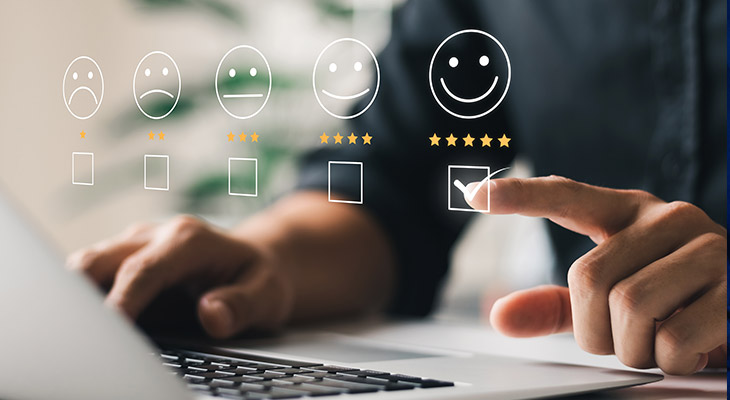
Stricter privacy laws & regulations
Starting with GDPR in Europe and CCPA and CPRA in California, brands face more stringent consumer privacy laws to make sure you don’t use a customer’s data without their consent and keep their information safe.
Third-party cookies phasing out
Google announced they’ll be phasing out support for third-party cookies in Chrome. This creates a significant impact on brands that rely on third-party data for marketing and sales.
Customer expectations have changed
Customers are demanding personalized experiences. They want to be marketed to as an individual, not part of a segment based on age or demographics.
Need to own the customer relationship
Brands need to own the data rather than purchase it from data aggregators to deliver the experiences customers demand. This provides full control over marketing strategies across all customer touchpoints.
Increased Relevance
Since first-party data comes directly from the customer, product recommendations, marketing messages, promotions and offers are more relevant based on the behaviors, preferences and interests they share.
Increased accuracy
First-party data takes the guesswork out of determining who your customer is and allows you to understand exactly what they like, prefer and value.
Control
Collecting first-party data directly from customers enables you to own and better manage the relationship across the entire customer journey.

Collecting first-party data is critical but equally important is being able to act on it in real time to deliver the timely, relevant one-to-one relationships customers expect. According to Forrester research, nearly 48 percent of companies are data-driven, meaning they make decisions first, then try to find data to back up those decisions. Only 11 percent of companies use data to drive decisions. Loyalty enables a data-led strategy to elevate every touchpoint across the entire customer journey.

Without a loyalty initiative, only 20% of new customers will make a second purchase.
Source: Zodiac
Collect first-party data at scale
Loyalty creates a mutual value exchange. Customers willingly share their personal information in exchange for personalized, unique experiences based on their preferences, behaviors and lifestyle.
Gain a unified customer profile
Robust first-party data is integrated with purchase, demographic, behavioral and other data to build a comprehensive view of each customer.
Identify and reward your best customers
First-party loyalty data enables you to know who your best customers are and uniquely reward them. KPMG reports that mature brands gain more then 85% of their growth from their most loyal customers.
Reduce churn and build lasting emotional bonds
Deliver benefits customers can’t find anywhere else, like exclusivity and early access. Emotionally engaged consumers spend more, buy more often and promote your brand more.

Increase customer acquisition
Overcome rising acquisition costs and gain new customers more cost-effectively through advocates, referrals and influencers.
Accelerate growth without discounting
Value-based engagement creates repeat customers, which Forbes reports can increase sales by 47%. Loyalty members spend up to 18% more.
Supply chain challenges are affecting every organization. Whether its increases in prices, product scarcity or a combination, the ripple effect will ultimately hit your customers, resulting in experiences that aren’t going to increase the value of the experience you’ve been working so hard to develop. What are you doing to prepare for these likely negative experiences?
94% of Fortune 100 companies are seeing supply chain disruptions from COVID-19.
Source: Accenture
Loyalty solutions enable brands to add value that extends beyond transactions, building emotional bonds that create stickiness despite price increases. Loyal customers choose to stay with one brand, even when prices or products deviate. They care about the brand and the relationship more than price.

52% of consumers surveyed say they’ll buy their favorite brand even if it’s cheaper and more convenient somewhere else.
Source: Accenture
Be inspired with endless ways to make every customer interaction rewarding.
Get a demo
Let’s explore how loyalty can help you become one of your customers’ most beloved brands.
Contact us